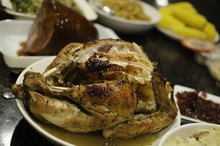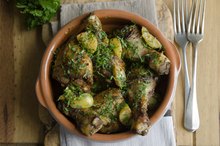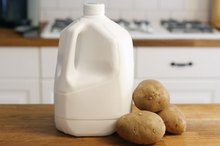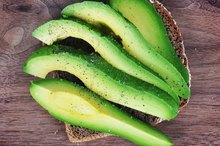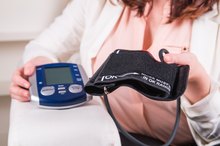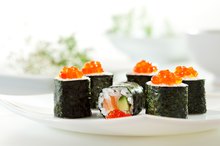What does fact checked mean?
At Healthfully, we strive to deliver objective content that is accurate and up-to-date. Our team periodically reviews articles in order to ensure content quality. The sources cited below consist of evidence from peer-reviewed journals, prominent medical organizations, academic associations, and government data.
The information contained on this site is for informational purposes only, and should not be used as a substitute for the advice of a professional health care provider. Please check with the appropriate physician regarding health questions and concerns. Although we strive to deliver accurate and up-to-date information, no guarantee to that effect is made.
Vitamins, minerals and amino acids are all substances the body needs to be healthy, and they interact with each other to promote optimal wellness. Sometimes supplementing with an amino acid can help the body better absorb a vitamin or mineral, and lysine and iron are good examples of this. If you have iron absorption problems or are deficient in this mineral, talk with your doctor about whether lysine may benefit you.
Lysine Identification
Lysine, also called L-lysine, is an essential amino acid. This means the body needs it but cannot make it naturally, so it has to be acquired. Amino acids help make protein and are important for healthy growth and development. Lysine is especially important in making carnitine. Carnitine converts fatty acids into energy and helps to lower cholesterol. Lysine also helps the body absorb calcium and helps form collagen, which is found in tendons and cartilage. A deficiency in lysine can cause:
- loss of appetite
- dizziness
- fatigue
- nausea
- anemia
- reproductive problemsß
- Lysine, also called L-lysine, is an essential amino acid.
- Lysine also helps the body absorb calcium and helps form collagen, which is found in tendons and cartilage.
Iron Identification
What Is the Difference Between L-Lysine & L-Glutamine?
Learn More
Iron is essential to human health, in that it is necessary for cell growth and differentiation and aids in oxygen transport to tissues. Most of the body's iron stores, about two-thirds, are found in hemoglobin. Hemoglobin is a protein in red blood cells that brings oxygen to the tissues. Iron is also found in myoglobin, which brings oxygen to muscles. The intestines regulate iron storage in your body; when your iron stores are low, your absorption of iron increases. Without enough iron, anemia can occur, resulting in fatigue and weakness. There are two kinds of dietary sources of iron: heme iron and nonheme iron 2. Heme iron is more easily absorbed than nonheme iron and is found in animal products. If you do not eat meat, you may need to consume more foods rich in nonheme iron, like legumes, nuts and seeds.
- Iron is essential to human health, in that it is necessary for cell growth and differentiation and aids in oxygen transport to tissues.
Lysine's Effects on Iron
Lysine helps the body better absorb iron. Protein sources are typically high in lysine and iron and include red meat, chicken, fish like sardines and cod, isolated soy protein and soybeans. Dairy products also contain lysine, so it may be a good idea, if you take an iron supplement to take it with milk or a meal containing dairy.
- Lysine helps the body better absorb iron.
- Dairy products also contain lysine, so it may be a good idea, if you take an iron supplement to take it with milk or a meal containing dairy.
Considerations
Lysine Overdose Symptoms
Learn More
If you think you have an iron deficiency, do not take iron or lysine supplements without first talking to your doctor. Your doctor may order blood tests to check your iron levels to see how deficient you are and how much supplementation is necessary. Even vitamins can interact with medical conditions or other medications you may be taking, so consult with a health professional about the medications you take and whether supplements may cause adverse effects.
Related Articles
References
- University of Maryland Medical Center: Lysine; Dr. David Zieve; 2010
- National Institutes of Health: Office of Dietary Supplements: Iron
- Veganhealth.org: Iron
- Beard, J. L., Dawson, H., & Piñero, D. J. (1996). Iron metabolism: a comprehensive review. Nutrition Reviews, 54(10), 295-317.
- Trumbo, P., Yates, A. A., Schlicker, S., & Poos, M. (2001). Dietary reference intakes: Vitamin A, vitamin K, arsenic, boron, chromium, copper, iodine, iron, manganese, molybdenum, nickel, silicon, vanadium, and zinc. Journal of the Academy of Nutrition and Dietetics, 101(3), 294.
- Allen, L. H. (2000). Anemia and iron deficiency: effects on pregnancy outcome. The American Journal of Clinical Nutrition, 71(5), 1280s-1284s.
- Drukker, L., Hants, Y., Farkash, R., Ruchlemer, R., Samueloff, A., & GrisaruâGranovsky, S. (2015). Iron deficiency anemia at admission for labor and delivery is associated with an increased risk for Cesarean section and adverse maternal and neonatal outcomes. Transfusion, 55(12), 2799-2806.
- Miller, J. L. (2013). Iron deficiency anemia: a common and curable disease. Cold Spring Harbor Perspectives in Medicine, 3(7), a011866.
- Percy, L., Mansour, D., & Fraser, I. (2017). Iron deficiency and iron deficiency anaemia in women. Best Practice & Research Clinical Obstetrics & Gynaecology, 40, 55-67.
- Telford, R. D., Sly, G. J., Hahn, A. G., Cunningham, R. B., Bryant, C., & Smith, J. A. (2003). Footstrike is the major cause of hemolysis during running. Journal of Applied Physiology, 94(1), 38-42.
- Zoller, H., & Vogel, W. (2004). Iron supplementation in athletesâfirst do no harm. Nutrition, 20(7), 615-619.
- Collings, R., Harvey, L. J., Hooper, L., Hurst, R., Brown, T. J., Ansett, J., ... & Fairweather-Tait, S. J. (2013). The absorption of iron from whole diets: a systematic review. The American Journal of Clinical Nutrition, ajcn-050609.
Writer Bio
Jaime Herndon has been writing for health websites since 2009 and has guest-blogged on SheKnows. After graduating with a Bachelor of Arts in psychology and women's studies, she earned a Master of Science in clinical health psychology and a Master of Public Health in maternal-child health. Her interests include oncology, women's health and exercise science.
